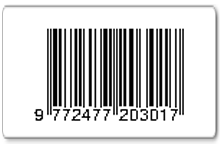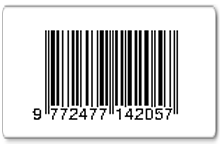A Cross-Case Study: Comparing the Role of Science Centers in Advancing Scientific Knowledge in Turkey and Denmark
Abstract
This study aimed to investigate the role of science centers in advancing scientific knowledge. To do so, two heads of science centers were selected to perform interviews, one of whom had previously worked as a head of science center in Denmark and the other of whom had previously worked as a head of science center in Turkey. The study's approach was modified as qualitative method, and the study can be thought of as a case study in this context. As a data collection tool, a semi-structured interview form was used. It was used to find out what the participants thought about the role of science centers in advancing scientific knowledge. Participants emphasize the importance of science centers in achieving effective science communication. This research is expected to guide future studies on the advancement of the scientific knowledge.
Keywords
Full Text:
PDFReferences
Aguirre, C. 2014, ‘Science Centers. Which role can they play to participate in a city social reconstruction?’, Journal of Science Communication, vol. 13, no.2, pp. 1-12. doi:10.22323/2.13020304
Antonioli, M., Blake, C. & Sparks, K. 2014, ‘Augmented reality applications in education’, The Journal of Technology Studies, vol. 40, no.1/2, pp. 96-107. doi:10.21061/jots.v40i2.a.4
Ateş, A., Ural, G. & Başbay, A. 2012, ‘Effect of Mevlana community and science center applications on learners’ science attitudes and contributions for learning process’, International Journal of Curriculum and Instructional Studies, vol. 1, no. 2, pp. 83-97.
Autio, E., Hameri, A. P. & Vuola, O. 2003, ‘A framework of industrial knowledge spillovers in big-science centers’, Research Polich, vol. 33, no.1, pp. 107-26.
Bamberger, Y. & Tal, T. 2008, ‘An Experience for the Lifelong Journey: The long-term effect of a class visit to a science center’. Visitor Studies, vol. 11, no.2, pp. 198-212. doi:10.1080/10645570802355760
Bandelli, A., Konijn, E.A. & Willems, J.W. 2009, ‘The need for public participation in the governance of science centers’, Museum Management and Curatorship, vol. 24, no. 2, pp. 89-104.
Bell, L., & Rabkin, D. 2002, ‘A new model of technology education for science centers’ The Technology Teacher, vol. 62, no. 3, pp. 26-9.
Bressler, D.M. & Bodzi, A.M. 2013. ‘A mixed methods assessment of students’ flow experiences during a mobile augmented reality science game’ Journal of Computer Assisted Learning, vol. 29, pp. 505-517. doi:10.1111/jcal.12008
Bruin, B. B. W. & Bostrom, A. 2013, ‘Assessing what to address in science communication’ Proceedings of the National Academy of Sciences, 110(Supplement_3), 14062–14068. 10.1073/pnas.1212729110
Burns, T. W., O’Connor, D. J., & Stocklmayer, S. M. 2003, ‘Science communication: A contemporary definition’, Public Understanding of Science, vol. 12, no.2, pp. 183–202. doi:10.1177/09636625030122004
Cigdemoglu, C., Köseoğlu, F. 2019, ‘Improving science teachers’ views about scientific inquiry’, Sci & Educ vol. 28, pp. 439–69. doi:10.1007/s11191-019-00054-0
Colakoglu, M.H. 2016, ‘STEM applications in Turkish science high schools’, Journal of Education in Science, Environment and Health, vol. 2, no. 2, pp. 176-187. doi:10.21891/jeseh.13757
Dal, B, Özdem, Y, Öztürk, N. & Alper, U. 2013, ‘Building capacity for public understanding of science: A report on the role of science centers’, Bilge Strateji, vol. 5, no. 8, pp. 57-67.
Davidsson, E ,& Jakobsson, A. 2007, ‘Different images of science at Nordic science centers’, International Journal of Science Education, vol. 29, no. 10, pp. 1229-44.
DMST 2020, ‘History of the Museum’, viewed 12 April 2020, https://tekniskmuseum.dk/english/about/
Experimentarium 2020, ‘About Us’, viewed 15 May 2020, https://www.experimentarium.dk/about-us/
Falk, J. & Storksdieck, M. 2005, ‘Using the contextual model of learning to understand visitor learning from a science center exhibition’ Science Education, vol. 89, pp. 744-78. doi:10.1002/sce.20078
Falk, H. J. & Needham, M. D. 2011, ‘Measuring the impact of a science center on its community’, Journal Of Research In Science Teaching, vol. 48, no. 1, pp. 1–12. doi:10.1002/tea.20394
Feinstein, N.W & Meshoulam, D. 2014, ‘Science for what public? Addressing equity in American science museums and science centers’ Journal of Research in Science Teaching, vol. 51, no.3, pp. 368-94.
Fischhoff, B. 2013, ‘The sciences of science communication’, Proceedings of the National Academy of Sciences, 110(Supplement_3), 14033–14039. doi:10.1073/pnas.1213273110
Gilbert, J. K. 2001, Towards a unified model of education and entertainment in science and technology centres. In S. Stocklmayer, M. Gore, & C. Bryant (Eds.). Science communication in theory and practice, (pp. 123 – 41).
Göpfert, W. 2008, The strength of PR and the weakness of science journalism (Edt. Martin W. Bauer and Massimiano Bucchi). Journalism, Science and Society Science Communication between News and Public Relations. Routledge.
Hakverdi C. M. 2013, ‘Investigating elementary school students’ behaviors at a science center’ Education and Science, vol. 38, no. 168.
Irwin, A. 2014, Risk, science and public communication: third order thining about scientific culture. In M. Bucchi & Brian T. (Eds.) Rootledge handbook of public commnucation of science and technology. Second edition (pp.. 160-172). Book Now Ltd.
Izgi-Onbasili, U. 2020, ‘Investigation of the effects of out-of-school learning environments on the attitudes and opinions of prospective classroom teachers about renewable energy sources’, Journal of Education in Science, Environment and Health, vol. 6, no.1, pp. 35-52. doi:10.21891/jeseh.670049
Köseoğlu, F., Tahancalıo, S., Kanlı, U. & Yılmaz, Y. Ö. 2020, ‘Investigation of science teachers’ professional development needs for learning in science centers’, Education and Science, Early Release, 1-23.doi: 10.15390/EB.2020.8725
Miles, M. B. & Huberman, A. M. 1994, Qualitative data analysis: An expanded sourcebook (2nd Ed.). Thousand Oaks. Sage Publications.
Miles, M. B., Huberman, A.M. & Saldana, J. 2014, Qualitative data analysis. A Methods Sourcebook (Edition 3). Thousand Oaks. Sage Publications.
Okulu, H.Z., Oguz Unver A., & Arabacioglu, S. 2019, ‘MUBEM & SAC: STEM based science and nature camp2’ Journal of Education in Science, Environment and Health, vol.5, no.2, pp. 266-282. doi:10.21891/jeseh.586326
Patton, M. Q. (2002). Teaching and training with metaphors. American Journal of Evaluation, vol.23, no.1, pp. 93-8.
Persson, P.-E. 2000, ‘Community Impact of Science Centers: Is There Any? Curator’, The Museum Journal, vol.43 no.1, pp. 9–17. doi:10.1111/j.2151-6952.2000.tb01156.x
Reid-Griffin, A. 2019, ‘Mentoring: Helping youth make a difference in STEM’ Journal of Education in Science, Environment and Health, vol. 5, no.1, pp. 1-11. doi:10.21891/jeseh.478308
Rennie, J. L & Williams G. F. 2002, ‘Science centers and scientific literacy: Promoting a relationship with science’, Science Education, vol. 86, pp. 706-26. doi: 10.1002/sce.10030
Schwan, S., Grajal, A. & Lewalter, D. 2014, ‘Understanding and engagement in places of science experience: science museums, science centers, zoos, and aquariums’, Educational Psychologist, vol. 49, no. 2, pp. 70-85. doi:10.1080/00461520.2014.917588
Storksdieck, M et al. 2016, ‘Associations for citizen science: Regional knowledge, global collaboration’, Citizen science: Theory and Practice, vol. 1, no. 2, pp. 10, 1–10.
Şentürk, E. 2015, ‘Field Trips to Science Centers: Teachers' Perspectives, Roles, and Reflections’, Unpublished doctorate thesis. Middle East Technical University, Turkey, Ankara.
Trench, B. & Bucchi, M. 2010, ‘Road maps for the 21st-century research in science communication, Science communication, an emerging discipline’, Journal of Science Communication, vol. 9, no. 3, pp. 1-5.
TÜBİTAK 2020, Science Centers, viewed 20 December 2020, https://bilimmerkezleri.tubitak.gov.tr/
Yıldırım, A. & Şimşek, H. 2011, Qualitative Research Methods in the Social Sciences. Seçkin Publishing, Ankara.
Zimmerman, H. T., Reeve, S., & Bell, P. (2009). Family sense-making practices in science center conversations. Science Education, pp. 478-505. doi:10.1002/sce.20374
DOI: http://dx.doi.org/10.30870/jppi.v7i1.10352
Refbacks
- There are currently no refbacks.
Copyright (c) 2021 Jurnal Penelitian dan Pembelajaran IPA

This work is licensed under a Creative Commons Attribution 4.0 International License.
Jurnal Penelitian dan Pembelajaran IPA is licensed under a Creative Commons Attribution 4.0 International License
Copyright © 2025 Jurnal Penelitian dan Pembelajaran IPA. All rights reserved.






